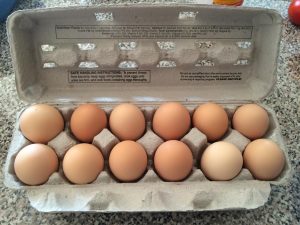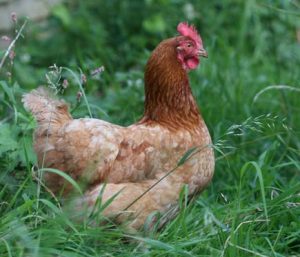Cage-free, grass-fed, natural – I know we have all seen these terms before and thought, “This sounds really healthy for me and probably better than this other brand. I should support these practices …sounds good let’s buy them!” Well, I’ll be the first to admit that I’ve been slightly mislead.
 Food labeling is a lot more intense, and sometimes deceptive, than it seems. This journey all began in the search for eggs when the local chickens were not laying in the winter. I started looking at local grocery stores for sustainably-produced options. They had eggs that are cage free, free-range, vegetarian-fed, pasteurized, and more. Where to begin? Cage-free sounded humane at first, but free-range sounds even better. Wait, there are non-vegetarian chickens? Do they eat beef or something, or just bugs which makes them omnivores? What does pasteurized mean? I left the grocery store feeling confused, uncertain, yet slightly proud about my purchase – cage-free eggs.
Food labeling is a lot more intense, and sometimes deceptive, than it seems. This journey all began in the search for eggs when the local chickens were not laying in the winter. I started looking at local grocery stores for sustainably-produced options. They had eggs that are cage free, free-range, vegetarian-fed, pasteurized, and more. Where to begin? Cage-free sounded humane at first, but free-range sounds even better. Wait, there are non-vegetarian chickens? Do they eat beef or something, or just bugs which makes them omnivores? What does pasteurized mean? I left the grocery store feeling confused, uncertain, yet slightly proud about my purchase – cage-free eggs.
When I got home, I still wasn’t sure I made the “right” purchase. I like to support hens that get lots of roaming time, diversity in diet, and those that I know are humanely treated. Curiosity lead me to digging further into the meaning of cage-free. I found that this term doesn’t necessarily mean that a happy chicken roaming around openly in a pasture or grassy field. It actually may mean that there may be HUNDREDS of chickens crammed into a barn, possibly with their wings and beaks clipped, laying eggs in hen houses. They aren’t kept in cages, but are close quarters just as bad? I know both methods provide a chicken with a better life than being in a cage, but I was in a moral debate about what I actually wanted to support.As I was doing more research, I found out there are four different types of environmental food labels for produce, meats, dairy and other products:
- Labels with no federal definition or regulation
- Labels with a definition but no regulation or 3rd party verification
- Labels with a definition, regulation but no verification
- …and finally labels that are defined, regulated, and verified.
Yes it is confusing and painstaking to remember what means what, especially when it comes to the term “natural”. By investigating the meaning of these labels, you may be able to support a farmer that is actually treating their animals humanely, processing foods without chemicals or environmental degradation, etc. You’re also making a conscious choice to support a farmer or company that is acting sustainably – reducing environmental impact, treating animals fairly, and being transparent with their claims.
What doesn’t surprise me is that companies use these logos and labels to help encourage consumers to purchase want to support. A great way to begin is reviewing the publication “Food Labels Exposed” by A Greener World, a nonprofit organization housing multiple food certifications (3rd party verified labels), for the scoop on what food labels actually mean. In doing so, it will open your eyes to the world of food labeling the next time you frequent the grocery store.
 Everyone has a different perspective on how they feel about produce and animal production. I encourage you to support your local farmers of all types, but just be more informed about the produce, meats, dairy and products you support with your dollars. Also – thank your farmers that are working hard every day to create better farmland and ecosystems for our future generations and being transparent with their practices. It isn’t easy, that’s for sure!
Everyone has a different perspective on how they feel about produce and animal production. I encourage you to support your local farmers of all types, but just be more informed about the produce, meats, dairy and products you support with your dollars. Also – thank your farmers that are working hard every day to create better farmland and ecosystems for our future generations and being transparent with their practices. It isn’t easy, that’s for sure!


